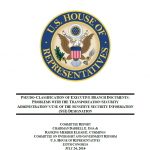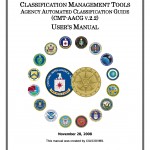
While the SSI designation can protect sensitive information, it is also vulnerable to misuse. Bipartisan concerns about the use of the SSI designation by the Transportation Security Administration (TSA), an agency of the Department of Homeland Security (DHS), have existed since the promulgation of the SSI regulations in 2004. Through its investigation, the Committee obtained witness testimony and documents that show possible misuse of the SSI designation by TSA. Witnesses detailed instances in which TSA barred the release of SSI documents against the advice of TSA’s SSI Office. TSA also released SSI documents against the advice of career staff in the SSI Office. The Committee’s investigation revealed that coordination challenges exist among the TSA Administrator, TSA’s Office of Public Affairs (OPA), and TSA’s SSI Office.

